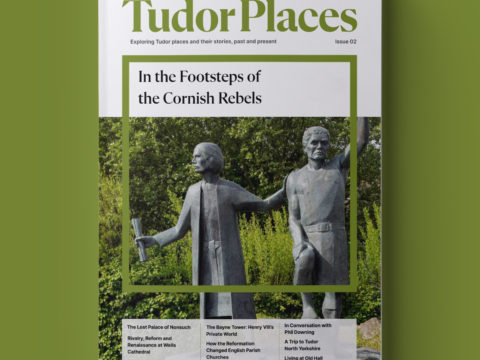Mary, Queen of Scots: Life Story
Chapter 3 : A French Treaty
Henry’s campaign of harassment continued, under the leadership of his brother-in-law, Edward Seymour, Earl of Hertford. Edinburgh was burnt, the port of Leith devastated and the Borders subjected to continual raids. The persistent harrying of Scotland by the English led some to question the pro-French policy and Beaton’s fitness as a minister – he seemed to be no more successful than Arran. Queen Marie was seen a more effective manager and she was present at the meetings of the Scots Privy Council. It is likely that she began suggesting that the cure for the English depredations was a closer alliance with France, now that Henri II had a son.
Although Beaton was pro-French, he was no more in favour of a French, than an English, marriage. He, like Arran, would have preferred Mary to be married to a Scots nobleman. Meanwhile the pressures that had led to dissatisfaction with the Catholic Church in Scotland were increasing and the number of nobles supporting reform was growing. Religious persecution was not a major concern of Beaton’s but the inspirational preaching of George Wishart was felt by him to be so incendiary that the preacher was burnt at St Andrews. This deeply angered the reformist lords of Fife and Lothian and a plot was laid to assassinate Beaton in 1546. He was stabbed to death by a group of young lords, led by Sir William Kirkcaldy of Grange.
The attack was certainly encouraged by the English government, however Henry did not provide immediate aid to the assassins, and Arran besieged them in the castle of St Andrew’s for over a year. Arran’s efforts were half-hearted. Whatever his continuing secret sympathy with the reformers, he could not be seen to condone the murder of a prelate, but his son, James, was being held hostage in the castle, and soon became a convert to the reformist cause.
With the death of Henry VIII in 1547, English policy took a pause, although the war was soon pursued with renewed vigour under Seymour, now Lord Protector, and Duke of Somerset. But French policy also changed with the death in March 1547 of François I and the succession of his son Henri II who was a friend of Marie of Guise. Henri sent warships to break up the siege of St Andrew’s and entered negotiations for a marriage between his son, François, and Mary.
Throughout the summer of 1547, the Scots and English prepared for war. The Scots initially had a victory at Ancrum Moor, but were comprehensively defeated at Pinkie. Mary was hidden on the island of Inchamolm, north-west of Stirling.
The English did not have the money or the men to hold Scotland permanently. They retreated and Mary returned to Stirling for a short period before being taken to Dumbarton Castle near Glasgow. Dumbarton is another great Scottish stronghold - the oldest fortification in the British Isles, dating from the sixth century. Caught between the rock of English aggression and the hard place of French influence, the Scots government, no doubt encouraged by Marie, decided that France was the lesser of two evils. In July 1548 Parliament accepted the Treaty of Haddington under which Mary was to be married to François on the condition that the King of France should defend Scotland as though it were his own territory whilst respecting Scotland’s independence. Mary was to be sent to France to be brought up there.
King Henri sent French galleys to fetch his future daughter-in-law and on 29th July 1548 Mary, accompanied by three of her illegitimate half-brothers, including, Lord James Stewart, as well as her illegitimate aunt Janet, Lady Fleming, said farewell to her mother and embarked for her new home. With her were her four friends, all called Mary. They had been carefully chosen by her mother to share her lessons and be her playmates. The most senior of these was Mary Fleming, her cousin.
Owing to contrary winds, sailing was delayed until 7th August and the flotilla then took the dangerous long route down the Western side of the British Isles, to avoid the English fleet that the Scots anticipated would be guarding the channel. Mary was a good sailor and, unlike many of her companions who suffered in the severe storms, gave no sign of seasickness. Mary and her flotilla arrived in France on 13th August.
Mary, Queen of Scots
Family Tree
